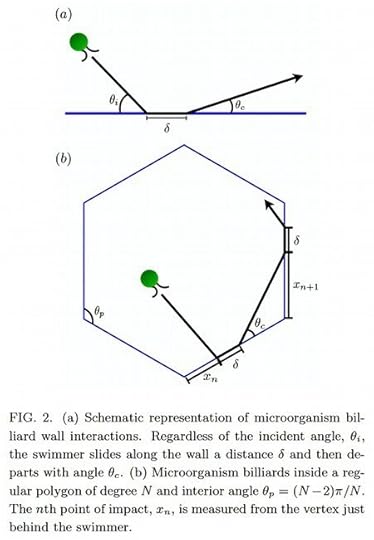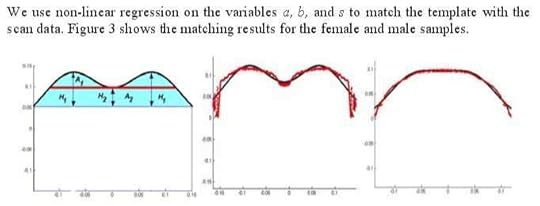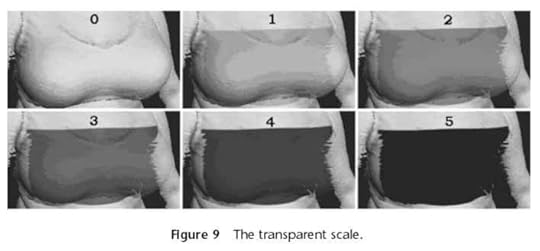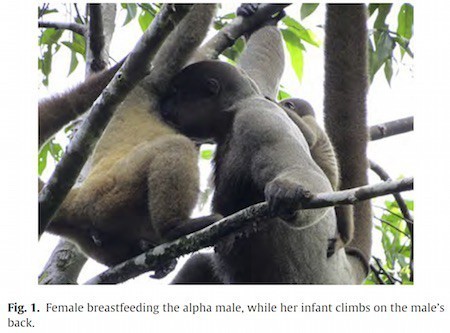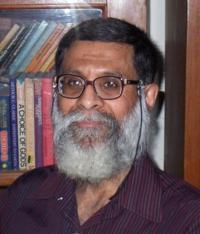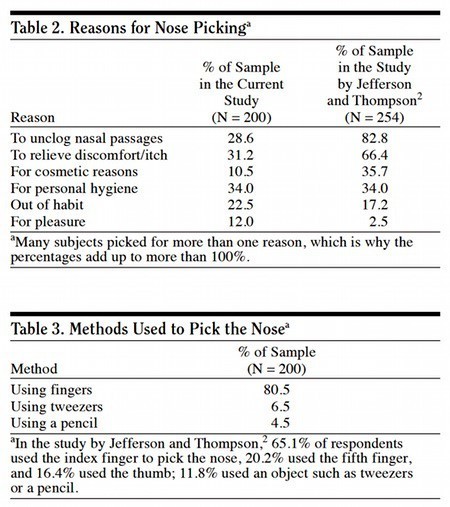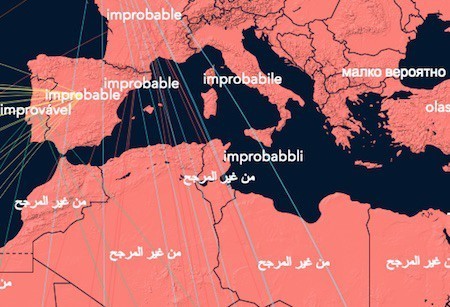Marc Abrahams's Blog, page 348
February 7, 2015
A Game of Life: Microorganism Billiards
The angle of incidence is strongly related to the angle of “reflection” in this new real-AND-SIMULTANEOUSLY-artificial game of the mathematical gods:
“Microorganism Billiards,” Colin Wahl, Joseph Lukasik, Saverio E. Spagnolie, Jean-Luc Thiffeault, arXiv 1502.01478, February 5, 2015. (Thanks to Mason Porter for bringing this to our attention.) The authors, at the University of Wisconsin, report:
“Recent experiments and numerical simulations have shown that certain types of microorganisms “reflect” off of a flat surface at a critical angle of departure, independent of the angle of incidence. The nature of the reflection may be active (cell and flagellar contact with the surface) or passive (hydrodynamic) interactions. We explore the billiard-like motion of such a body inside a regular polygon and show that the dynamics can settle on a stable periodic orbit, or can be chaotic, depending on the swimmer’s departure angle and the domain geometry. The dynamics are often found to be robust to the introduction of weak random fluctuations. The Lyapunov exponent of swimmer trajectories can be positive or negative, can have extremal values, and can have discontinuities depending on the degree of the polygon. A passive sorting device is proposed that traps swimmers of different departure angles into separate bins. We also study the external problem of a microorganism swimming in a patterned environment of square obstacles, where the departure angle dictates the possibility of trapping or diffusive trajectories.”
Here’s further detail from the study:
BONUS: That’s a game of life. It’s different, mostly, from THE game of life. THE game of life is John Conway‘s “The Game of Life“:
For most of the world, the main introduction to Conway’s Game of Life was Martin Gardner’s 1970 article in Scientific American.
February 6, 2015
Bust detection algorithm
Around 2006, concerns were being raised regarding the (what was then) the newly emerging technology of 3-D full-body scanners.
“These high-resolution scanned images reveal human body details and have raised privacy concerns. Airport and transport officials in several countries are refusing to run a test trial with the scanners until a more suitable way to conceal certain parts of the human body is found.”
This prompted a research team from the Visual Intel. Studio at Carnegie Mellon University to develop computer algorithms which could identify specific parts of the human body and then block their display to scanner operators. Their technique was aimed at detecting characteristically curved areas of the female human form – creating what was in effect an automatic bust-detector.
The bust areas were then hidden using a modesty filter for the appropriate parts of the scanner image.
The algorithm proved to be around 90% reliable, but there was a ‘dilemma zone’ :
“[…] some over-weight males do have the curvature features. However, the over-lapped zone is small, less than 8% of the total one hundred samples.”
see: Feature hiding in 3D human body scans [InformationVisualization (2006)5, 271–278] and A Privacy Algorithm for 3D Human Body Scan
[Lecture Notes in Computer Science, LNCS 3394, Springer, 2006.]
The wondrous Walter Pitts and his friends and collaborators
Amanda Gefter, writing in Nautilus, profiles Walter Pitts:
Thus formed the beginnings of the group who would become known as the cyberneticians, with Wiener, Pitts, McCulloch, Lettvin, and von Neumann its core. And among this rarified group, the formerly homeless runaway stood out. “None of us would think of publishing a paper without his corrections and approval,” McCulloch wrote. “[Pitts] was in no uncertain terms the genius of our group,” said Lettvin. “He was absolutely incomparable in the scholarship of chemistry, physics, of everything you could talk about history, botany, etc. When you asked him a question, you would get back a whole textbook … To him, the world was connected in a very complex and wonderful fashion.” …
The Lettvin mentioned there is Jerry Lettvin, who many years later became part of the Improbable Research gang (you may have seen him performing in several Ig Nobel Prize ceremonies). Jerry died in 2011. He was a colorful and influential character.
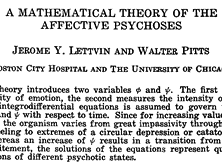 Jerry and Walter were, among many other things, jokers. Here’s the story of how young Jerry and Walter published their first scientific paper — a hoax that preceded by several decades the celebrated Sokal hoax:
Jerry and Walter were, among many other things, jokers. Here’s the story of how young Jerry and Walter published their first scientific paper — a hoax that preceded by several decades the celebrated Sokal hoax:
BONUS: You may notice a similarity between the early life/career of Walter Pitts and the less colorful early life/career of the title character in the fictional movie “Good Will Hunting.”
February 5, 2015
Dripping: Compare and contrast – latte art Master King, Kimdaeki, Jackson Pollock
Compare and contrast these instructional videos. Each deals with dripping. You may find maximum enlightenment if you disable the sound.
1. Dripping, by a latte art master Master King
1. Dripping, by drip coffee maker Kimdaeki
1. Dripping, by Jackson Pollock
February 4, 2015
Unusual Behavior: Females breastfeeding adult males
From time to time, unusual animal behavior comes to the attention of the science community. Now comes this study:
“Unusual Behaviour in Grey Woolly Monkeys (Lagothrix cana): Females Breastfeeding Adult Males,” Bárbara Cartagena-Matos, Hilton Ferreira Japyassú, Mariana Cravo-Mota, and Bruna Martins Bezerra, Mammalian Biology-Zeitschrift für Säugetierkunde, vol. 80, no. 1 (2015): 59-62. (Thanks to Ig Nobel Prize winner Pascal Malkemper for bringing this to our attention.) The authors, at Campus Universitário de Santiago, Portugal, Federal University of Bahia, Brazil, and the University of Bristol, UK, report:
“Breastfeeding between adult individuals has been reported in humans in the context of erotic lactation (e.g. Barlett 2005) and there is evidence of some whales suckling sporadically for as long as 13 years (Klinowska 1991). Here we provide observations of breastfeeding between adults in a group of grey woolly monkeys, Lagothrix cana.”
Here’s further detail from the study:
Black holes and their possible wigs
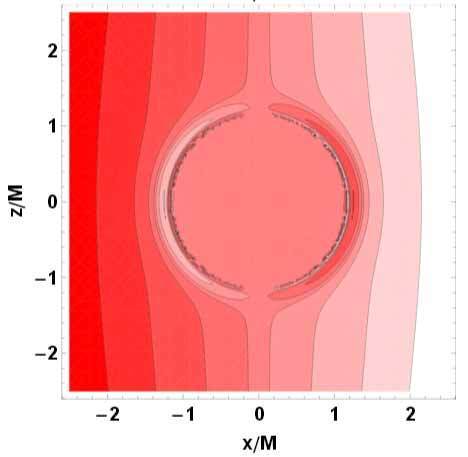 It was somewhere around 1973 that the high-end theoretical physicist and H-bomb co-developer (the late) professor emeritus John Archibald Wheeler announced that “A black hole has no hair.” [in: Gravitation, Charles W. Misner, Kip S. Thorne and John Archibald Wheeler]
It was somewhere around 1973 that the high-end theoretical physicist and H-bomb co-developer (the late) professor emeritus John Archibald Wheeler announced that “A black hole has no hair.” [in: Gravitation, Charles W. Misner, Kip S. Thorne and John Archibald Wheeler]
The concept, which was later consolidated as the ‘No-hair theorem’ has since been updated with a twist – although black holes may not have hair, perhaps they could instead sport ‘wigs’? For a recent paper on the subject, see, for example: ‘Numerical simulations of single and binary black holes in scalar-tensor theories: circumventing the no-hair theorem’ [E Berti, V Cardoso, L Gualtieri, M Horbatsch – Physical Review D, 2013 – APS]
“Scalar-tensor theories are a compelling alternative to general relativity and one of the most accepted extensions of Einstein’s theory. Black holes in these theories have no hair, but could grow ‘wigs’ supported by time-dependent boundary conditions or spatial gradients.“
There are a number of earlier papers on the subject, and Improbable has attempted to uncover the origin of the black-hole-wig concept. The current best-guess is that it appeared in 1995, in this paper by Ana Achúcarro, Ruth Gregory and Konrad Kuijken: ‘Abelian Higgs hair for black holes’ [Physical Review D, 1995 – APS] Which contains the following paragraph:
“Finally, we try to answer the question of whether the Abelian Higgs vortex is true hair, or whether it is just horizon dressing, and would be more appropriately dubbed a ‘wig’”
Bonus: A Wheeleresque parody paper
Professor Wheeler sometimes had a colourful writing style, applying liberal helpings of a kind of meta-poetic language to his explanations of perplexing theoretical physics concepts. Whether that helped to clarify things or not is open for debate.
“Einstein’s battle-tested and still-standard geometric theory of gravitation leaves no room for ifs, ands, or buts about the dynamics of a 3-sphere model universe. It is a one-cycle only dynamics. It totally rules out any cycle after cycle after cycle history, world without end. No place whatsoever does it provide for any ‘before’ before the big bang, any ‘after’ after the big crunch. Never has there been a human without a navel. No other way offers itself for his creation. It is conceivable that the universe likewise could never have come into existence were it not endowed in its history-to-be with a double belly-button: big bang and big crunch. What goes on at these two gates of time is still, however, beyond our ken.”
[in: ‘A journey into Gravity and Spacetime’ John Archibald Wheeler, page 243, 1990]
Earlier, in 1974, similarly styled Wheeler-prose had inspired author John Archibald Wyler* to write a comedic parody, that was nonetheless published in the normally serious journal General Relativity and Gravitation (Volume 5, Issue 2, pp 175-182) ‘Rasputin, science, and the transmogrification of destiny’ [the full paper may be found here]
*Does anyone know who it was?
Also see: (possibly partially related or otherwise) Hairy Ball Update 2012
February 3, 2015
Why do we pick our nose?
The BBC looks into the question. The biggest thing it finds is Dr. Chittaranjan Andrade‘s study that won the 2001 Ig Nobel Prize for public health.
Here, at right, is a photo of Dr. Andrade.
And here, below, is detail from Dr. Andrade’s study:
Prof. Irus Braverman’s Toilet Project
“My fascination with interstitial legal geographies manifest in city trees has led me to the study of public washrooms and zoos.”
– explains Irus Braverman who is Associate Professor of Law and an Adjunct Professor of Geography at the State University of New York, Buffalo.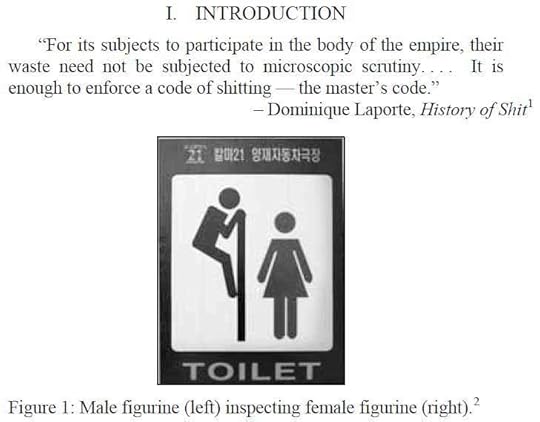
The professor’s undertaking, entitled ‘Toilet Project’ has:
“ […] emphasized the interrelations between human and nonhuman inspection, demonstrating how, through the design of automated fixtures, human agency is embodied into and at the same time replaced by nonhuman actancy. Rather than placing a human policeman to make sure that the user flushes after every use – which might constitute an illegal, immoral, and also economically impractical act in the context of the public washroom — a nonhuman ‘thing’ performs this dirty task.“
The last in the series of the professor’s toilet papers, ‘Loo Law : The Public Washroom as a Hyper-Regulated Place’ (in: Buffalo Legal Studies Research Paper No. 2009-03 Hastings Women’s Law Journal, Vol. 20, No. 1, 2009)
“[…] argues that as a result of the complex interrelations between law and spatiality, the American public washroom–and public washrooms worldwide–has become a uniform, cookie-cutter space that does not allow for much innovation, creativity, or even liberty on the part of its everyday users.”
Note: An example of the kind of nonhuman thing (an automatic sensor) that the professor covers.
February 1, 2015
Watch and hear as “Improbable” spreads to every country
On the Wordmap web site you can listen as the word “improbable” is mechanistically translated into many languages, and then see which countries commonly use each of those translated words.
The translations are performed by Google Translate. The country associations are performed using data from Wikipedia.
It’s not just “improbable”. Wordmap will translate and map pretty much any word you feed it.
Awkwardly Worded: “Use of Pepto-Bismol in Diarrhea”
This week’s Awkwardly Worded Study Title is:
“Use of Pepto-Bismol in Diarrhea,” W.F. Arndt, Jr. and J.M. Burna, Journal of Pediatrics, vol. 100, no. 5, May 1982, p. 839.
Congratulations to the authors, or to the editor, who wrote the title.
Marc Abrahams's Blog
- Marc Abrahams's profile
- 14 followers


